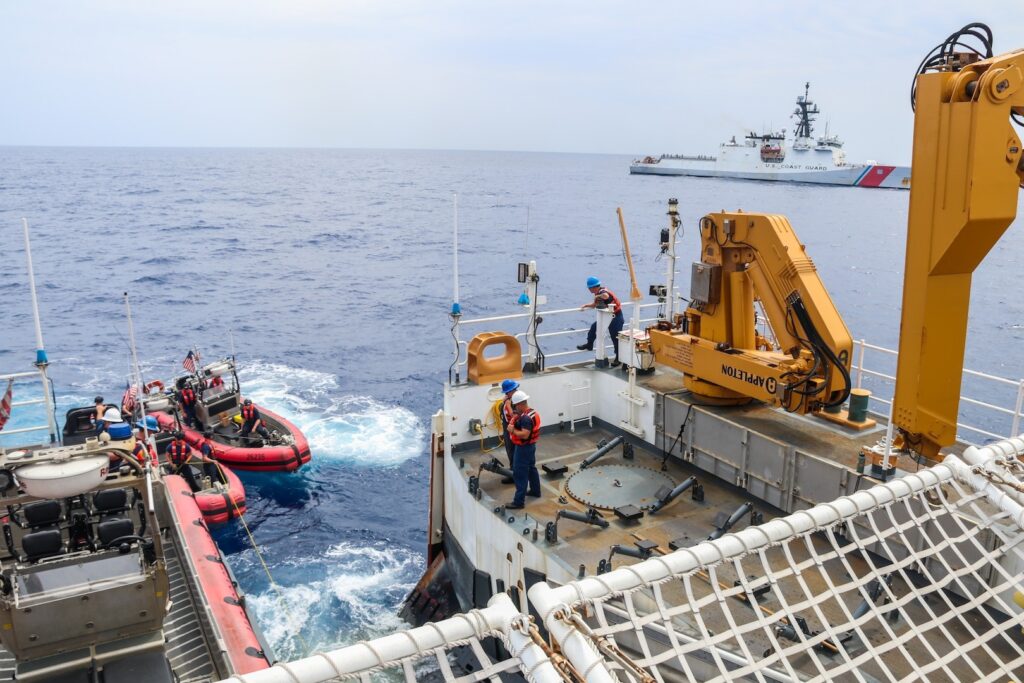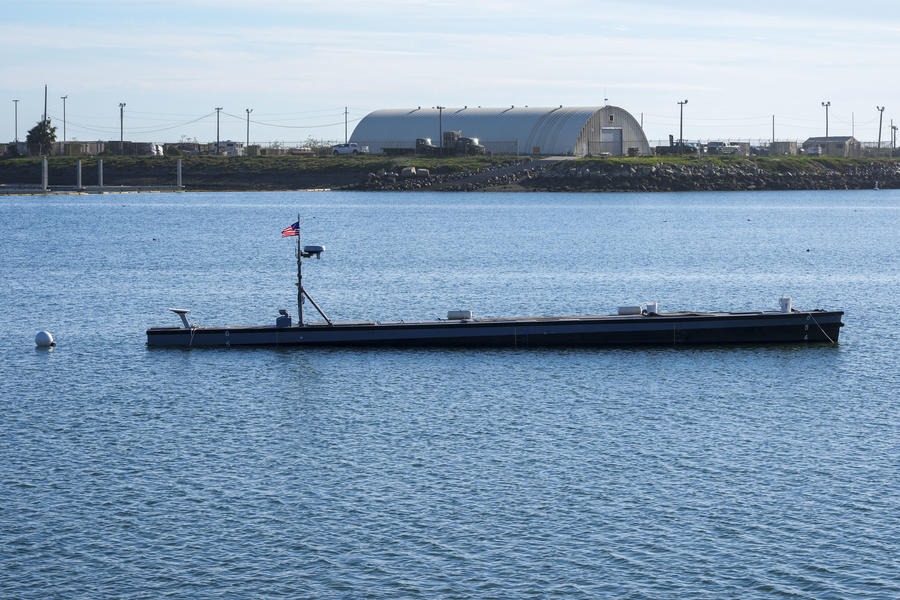Joint Effort to Clear Baltimore Bridge Debris Launches Over Weekend

April 1, 2024 | By Matthew Olay, DOD News
Multiple Defense Department assets teamed with state, federal and private sector agencies in Baltimore Harbor Saturday to begin removing wreckage from the Francis Scott Key Bridge collapse.
“The continues to support the whole-of-government response in Baltimore. Through the Unified Command, the U.S. Coast Guard is coordinating this effort in collaboration with the U.S. Army Corps of Engineers, the U.S. Navy and many others,” Deputy Pentagon Press Secretary Sabrina Singh told reporters during a meeting today.
Crews of highly trained demolition experts began cutting into the top portion of the collapsed bridge’s north side on Saturday, and the Army Corps of Engineers completed a required underwater survey — both necessary steps prior to removal of debris, Singh said.
Meanwhile, Naval Sea Systems Command is aiding Unified Command’s efforts to clear out debris and reopen the harbor by contracting out the 1,000-ton lift capacity derrick barge Chesapeake, the 200-ton lift capacity revolving crane barge Ferrell and the 150-ton lift capacity crane barge Oyster Bay. All are on scene in Baltimore Harbor.
An additional, 400-ton lift capacity barge is scheduled to arrive next week, according to a news release distributed this afternoon by Navy public affairs.
On Sunday, Coast Guard Capt. David O’Connell, the federal on-scene coordinator for Key Bridge Response 2024, announced preparations for the establishment of a “temporary alternate channel on the northeast side of the main channel in the vicinity of the Francis Scott Key Bridge for commercially essential vessels,” according to a Key Bridge Response 2024 press release.
“This will mark an important first step along the road to reopening the Port of Baltimore,” O’Connell said.
In addition to over 1,000 engineering, construction, contracting and operations specialists with the Corps of Engineers, the Coast Guard-led Unified Command’s additional components include assets from the Maryland Department of the Environment, the Maryland Transportation Authority, the Maryland State Police and a private sector crisis and emergency management consulting firm.
” ready to assist in further efforts to provide immediate response, reopen the port, rebuild the bridge and support the people of Baltimore,” Singh said.





